single-phase vs. three-phase generator
- By BISON
Table of Contents
A power generator is necessary to manage our daily life during power failure. But do you know what the types of generators are when we talk about power output? Generally, single-phase and three-phase generators are like relatives in the power backup industry. This article has shared important information and differences between single-phase & three-phase generators. If you want to know this knowledge, spare a few minutes and read this article.
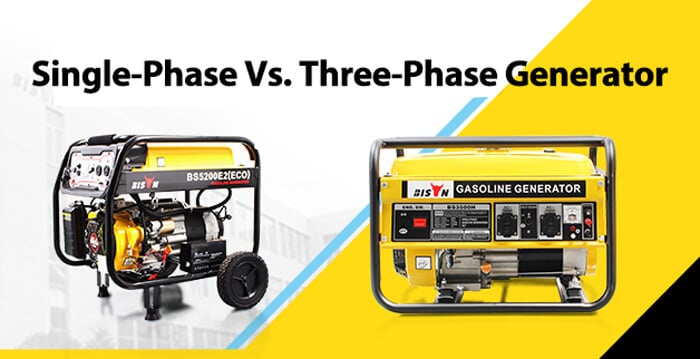
single-phase generator
A single-phase generator uses a single AC wave to produce a kilowatt output. Since these generators operate from only one “line” of electricity generated between low-conductivity wires with up and down output cycles, single-phase generators will not provide as stable a power source as their 3-phase counterparts. The differential current of a single-phase generator is mainly responsible for the power level drop across the process. As a single “power line” rises to its peak and falls back down, so does the power level it generates.
Fortunately, single-phase generators do not “drop out” or lose power, even at the lowest point. Low cycle currents are usually only noticeable once this generator is overpowered. For example, commercial lights are essential for single-phase generators, yet they cycle so rapidly that flickering due to current low points is invisible to the human eye.
Overall, a single-phase generator is made up of the following features:
- A relatively light load
- As few as two winding components
- The generally less conductive winding
- A current produced by a single-voltage
- High risk of voltage disturbances
- High maintenance costs and low initial purchase costs
- Less efficient and less powerful
three-phase generator
A 3-phase generator produces three separate waves of AC power output. AC power that operates in a single sequence guarantees a continuous power supply, and ensuring that energy always flows and that the power level never drops. Due to this uninterrupted reliability, three-phase generators are more powerful and efficient, due to their unmatched reliability.
A 3-phase generator patterns its three conductor wires and one neutral wire to cycle at 120-degree offsets to maintain power for more severe applications or mission-critical machinery. A 120-degree ratio means that as one current cycle is at its lowest, the other will be at its highest, offering complementary wavelengths acting in tangent to provide constant power.
Three-phase generators offer an even balance between the power provided and the cost of construction and maintenance. They are also more versatile, with multiple modes of electrical equipment. For example, operators may choose to synchronize all three current cycles to power large industrial-grade equipment. Or, each conductor wire may connect three small pieces of equipment to individual current lines within a single 3-phase generator.
The former is often the case for powering a machine or system in factories and industrial applications. At the same time, the latter works in applications such as powering elevators in multi-story office buildings and suites of office desktops.
Overall, a 3 phase generator will have the following features:
- Three currents fluctuate at 120-degree intervals.
- Three copper winding components
- More complex winding or wiring
- Lighter and more efficient
- Power heavy and industrial loads or distribute the load across multiple applications.
- More economical, reliable, and robust
Single-phase vs. three-phase generators: Notable differences
Number of conductors
Single-phase generators use only one conductor, while three-phase generators use three. The only similarity between the two is that they both use only one neutral wire, which is the critical component to guarantee that the circuit is complete to generate adequate power.
Power output
Single-Phase generators are usually rated up to 10 kilowatts. They produce a voltage of 120/240 volts, making them suitable for lower power applications.
On the other hand, three-phase generators usually at a higher voltage, often around 480 volts. This means they can deliver more power, with ratings often exceeding 10 kilowatts.
Cost
Single-Phase Generators: These generators tend to be less expensive upfront due to their simpler design and lower power output. However, their operational costs can be higher due to lower efficiency and higher fuel consumption.
Three-Phase Generators: While these generators might have a higher initial purchase price, they often offer lower long-term operational costs due to their higher efficiency and lower fuel consumption.
Application usage
Because of the limited power that single-phase generators offer, it’s more likely that you’ll see or use these generators for smaller appliances that don’t require large amounts of power. Ideal for residential and light commercial use, powering equipment like lights, fans, and small appliances.
Three-phase generators are more suitable for industrial applications or places requiring high power output, such as factories, large commercial buildings, or sites using heavy machinery. Data centers being a prime example.
Maintenance and stability
Maintenance is one of the most important aspects to consider when looking for a backup generator to purchase, as you don’t want to purchase a generator that is difficult to maintain. Unfortunately, since single-phase generators operate using only one conductor, the entire generator would shut down if this one phase failed.
Fortunately, with three-phase generators, These generators are often more durable due to their robust design and ability to handle heavier loads. If a fault occurs in one of the phases, the other two conductors can carry the load to maintain a continuous power supply.
In conclusion
While single-phase generators may be more appropriate for smaller, less power-intensive applications, three-phase generators offer higher efficiency, durability, and power output, making them a more suitable choice for larger, more power-demanding environments. Always consider your specific needs when choosing between these two types of generators.
As China’s leading generator manufacturer, BISON is committed to providing first-class power solutions according to your needs.
If you would like to purchase generators in bulk, we invite you to explore our diverse product range. We provide competitive prices and comprehensive after-sales service to ensure you get the best value for your investment.
For more information about our products or to purchase in bulk, please feel free to contact us. Choose BISON – drive your business efficiently and reliably.
Most Popular Posts
QUESTIONS?
CONTACT US TODAY.
buy?
Related Products
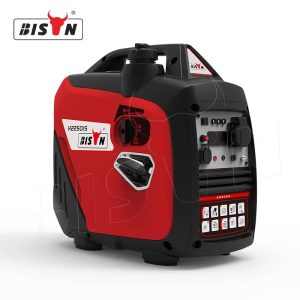
super quiet portable inverter generator
BISON BS2500I is a super quiet and portable inverter generator, perfect for a variety of
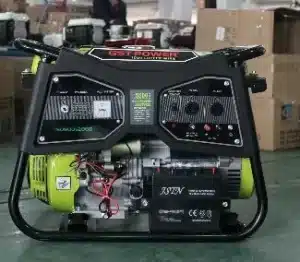
Fuel Gasoline And Propane Powered Electric Start Generator
Switch between gasoline and propane with the simple turn of the selection dial
120/240
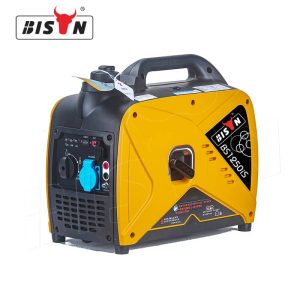
inverter generator for home use
The BISON BS-S2000ie portable inverter generator is the perfect solution for home backup power. It
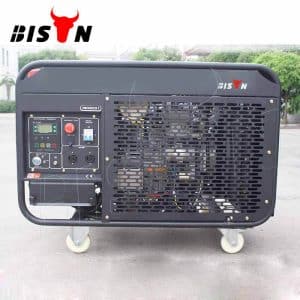
big power diesel electric generator
BISON BS9500DCE is a commercial-grade diesel electric generator that delivers big power when you need
.png)
-qbpqbzxxvtguiuwezisu6wo6j1i29b4m1el1ir1u8o.png)

